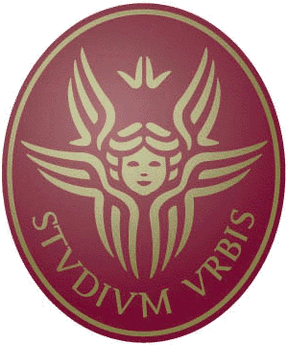After the rediscovery of the
Code of Justinian in 1070 established new admiration for law rather than “might
makes right,” Europeans began a new focus on studying law, philosophy, and
theology to prove who was in the right. The first was founded in Bologna,
Italy, where international students hired scholars to teach them how to be
protected by (and from) city law. Guilds and kings began their own universities
in Italy, France, and England, collections of like-minded individuals where the
brightest minds were collected to train and teach. In 1303, concerned that
intellectuals were gaining an upper-hand on theology, Pope Boniface VIII
founded a university of his own, Sapienza
– Università di Roma, the University of Rome for
Wisdom. Just before its release, the papal bull was edited to read “for the
good of all men,” perhaps in an effort to ensure universal church authority, a
point he had battled over with Phillip IV of France and led the king to march
on Rome.
In 1431, Pope Eugene IV
reorganized and revitalized the university, dividing it into schools for Law,
Medicine, Philosophy, and Theology. Upon a review of Boniface’s words, Eugene
decided to add a fifth school of Builders that would handle practical matters
that affected commoners, primarily improving agriculture. It was a controversial
action considered banal by many scholars, but faculty was readily available
from the military engineers in the Venetian Wars (1416-1573). The calculating
wits that produced war engines were applauded as they approached civilian
issues of flood control, land reclamation, and hydropower.
As the school’s reputation
improved, it attracted a young Leonardo da Vinci, who would become its first
legendary faculty member. Da Vinci, who had apprenticed as an artist, had been
disgraced by libel and became determined to found a new life in Rome. He
initially applied to the school of medicine to teach from his knowledge of
anatomy, but his sense of innovation (such as writing backwards to avoid
ink-stains from his left-handedness) brought him to the Builders. Students
followed his teaching in earnest, putting thousands of man-hours into inventions
that da Vinci himself could have only drawn in his journals. Vincians
experimented with submarines in the Tiber, flew parachutes, and drove spring-driven
automated carts.
The legacy of da Vinci was
largely considered to be charming toys until the attempted sack of Rome in
1527. Charles V, the Spaniard Holy Roman
Emperor, defeated France in battle in Italy but had run out of funds to pay his
soldiers. They mutinied and demanded to march on Rome, where Pope Clement VII
had previously given his support to France. Only five hundred Swiss Guard stood
against the onslaught of some 20,000 mercenaries. The pope called for militia,
and “like Archimedes at Syracuse,” the students and faculty of Sapienza brought
out engines of war that had only been tested in games: experimental cannons,
rotating scythes, collapsible towers, and flame-throwers. Legends stated that
legions of automaton warriors marched, but it was just one, which was quickly
defeated, although it did leave behind a stunning psychological effect.
Students were able to drive off Charles’ troops and save
the city. All of Europe marveled at the applications of science, and other
universities swiftly adopted their own schools of engineering. Outside of war,
engineers found themselves employed in Sapienza’s original direction of
improving the land for mankind in road-building, irrigation, and invention. The
implementation of the printing press spread ideas far and wide, especially
after the water-powered automated press began delivering thousands of pages
each hour. As minds tackled electricity, steam, and chemistry, an industrial
revolution swept over Europe. Papal Italy was at the forefront, becoming a thinktank
that again won fame in war through technological superiority when armored
wagons demolished Gustavus Adolphus’s Swedish invasion of Pomerania in 1630.
The expansion of technology also brought dangerous levels
of new knowledge to the public, such as Pisan Galileo Galilei’s theory of a
heliocentric Solar System. While the Catholic Church had affirmed its position
with the Counter-Reformation on mass-printed pamphlets and manufactured goods,
the scientific discovery had a great deal of theological backlash. Scholars at
Sapienza studied Galileo’s theory, tested it, and recommended to the pope that
it be upheld. With a public relations machine already in place, theologians
quickly assembled doctrine to better explain the significance in the delicate mechanics
of Creation.
Gradually, the power of kings in Catholic lands gave way
to the political, religious, and economic power of the Pope and its many
banking and industrial interests. Steam-powered ships from Portuguese and
Spanish fleets created a global empire, and Protestants in Northern Europe routinely
made alliances to carve out colonies of their own. Catholic colonies sometimes attempted
to gain independence from their mother countries like the Protestants, but the
risk of excommunication proved too great for nations at large to rebel against
the Church’s commonwealth, which came to dominate South America, half of North
America, Africa, and much of Asia.
--
